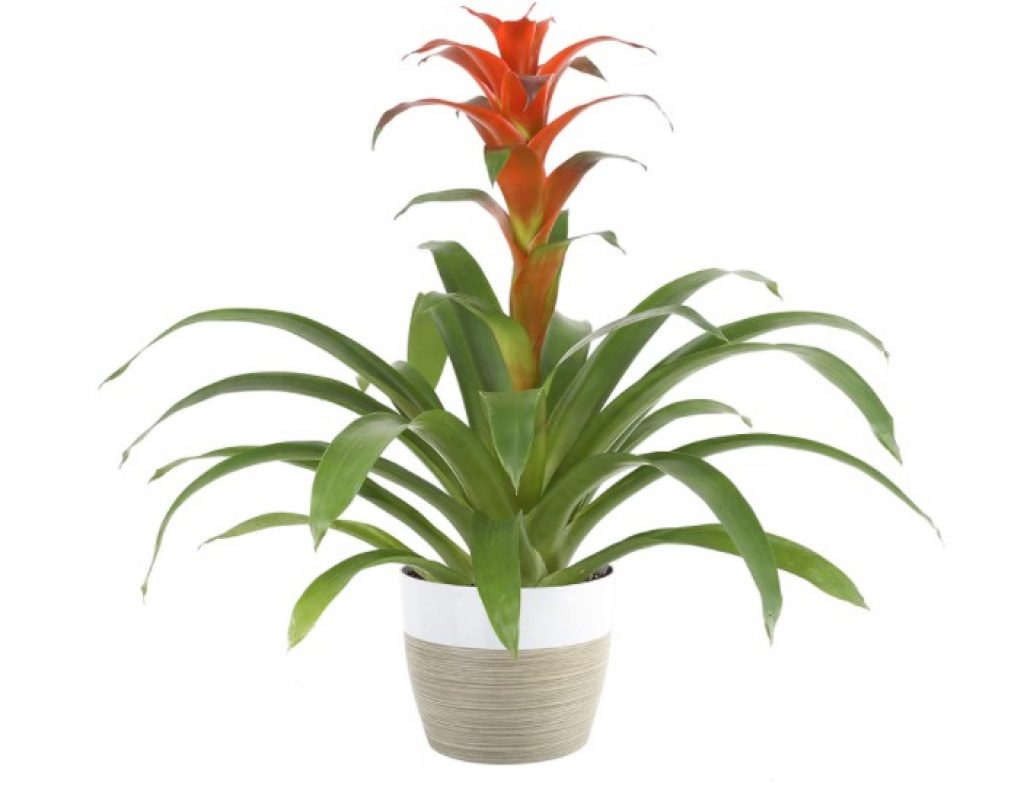Bromeliad is a common name for the family Bromeliaceae with 75 genera and about 3590 species. These monocot flowering plants are native to mainly tropical America, with a few found in West African tropics and American subtropics.
Besides pineapple, which is an important cultivated crop, i.e., fruit, there are many bromeliads grown as ornamental plants (garden and houseplants). Some of the best genera with alluring species, hybrids, varieties, and cultivars you should consider as house plants include:
- Aechmea
- Guzmania
- Neoregelia
- Vriesea
- Neoregelia
- Tillandsia
- Cryptanthus

Are Bromeliads Safe to Cats?
Yes. Bromeliads are safe to cats, i.e., all the various houseplants in the bromeliad family are not poisonous to cats and even dogs. This is a sigh of relief to people who have these pets because they sometimes graze greeneries, including houseplants and grass.
Besides decorating and creating a tropical-like charm in your home, bromeliads will help clean air (purify volatile organic chemical or VOCs) inside your home that is released by paints, furniture, cleaning supplies, printers, copiers, dry-cleaned clothes, among other things.
Finally, besides cats, bromeliads are not toxic to humans. However, there may be species you need to keep out of your children’s rich because their sap may potentially cause allergic reactions, characterized by minor dermatitis.
Care
Since plants adapted to tropical climates, they need warm, shady, wet, and humid conditions if you have them outdoors. Therefore, ensure they are not exposed to full sunlight (will suffer from leaf burns) or freezing conditions.
Also, they need well-drained soil (not soggy). However, the exact conditions may vary from one species, cultivar, or variety to another.
On the other hand, if you keep them indoors, especially people I temperate regions, they don’t need much to thrive. Some of the conditions that will favor them include:
- Lighting – They thrive well in bright, indirect sunlight just as they receive while in their natural habitat. Direct sun will cause damage to the leaves.
- Humidity – Bromeliads require high humidity, ideally 40- 60% or more. To keep this humidity, you may need to run a humidifier, create a humidity tray, mist, and so on. You can also place them in your toilet or kitchen as these places tend to have higher humidity,
- Soil – They need well-drained soil. A mixture of two parts of peat and one part of sand will be ideal for their growth. Also, charcoal, orchid mix, and charcoal potting will work well.
- Temperature – Keep the temperature between 55- and 80-degrees Fahrenheit. However, they can still thrive in lower temperatures but not below 40 degrees Fahrenheit.
- Fertilizer – When it’s growing season, they need 1/8 or 1/4 strength fertilizers after every one week to a month.
Alternatives
As you have seen, there is a little bit of care required to have bromeliads, but some species are stunningly beautiful. However, if you find them overwhelming, there are other cat-friendly houseplants to give a try that include:
- True palms like parlor, areca, majesty ponytail, etc.,
- Aluminum plant
- Cushion aloe
- Echeveria glauca
- Ghost plants
- Pheasant plant
- Maidenhair fern
- Polka dot plant
- Lipstick plant
- Calatheas
This list is not conclusive. Many other great houseplants are easy to grow and don’t need much care.
